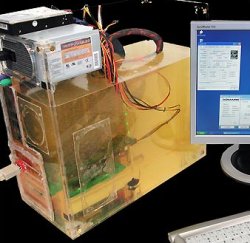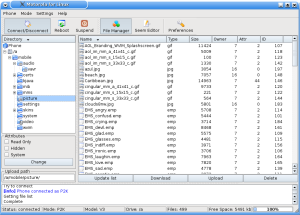Linux Driver for HP2600n
One of the areas that Linux still lags behind Windows is in the support of peripherals. This may be because most drivers are written by the manufacturer of the peripheral and, over the years, most drivers were written for Windows. In addition, giving credit where due, Microsoft spent a lot of time and money on writing their own drivers and, perhaps more importantly, also made available to developers, kits to help them write their own.
Still, why don't more manufacturers support Linux?. Especially those who call themselves high technology companies. I mean, how much does it cost to write a driver relative to the revenues they can generate by selling their products (e.g., printers, scanners, keyboards, mice, graphics tablets, etc.) to Linux users?
For example, let's look at Hewlett Packard. Among other things, HP makes a line of laser printers. For many years, HP LaserJets were the standard in office laser printers. These printers were admired for their ability to just keep on running. They were even compared to military tanks in their ability to take abuse, but keep on running. Year after year.
But as the environment changed, and competition began to eat into profits, HP seemed to loose its way. It seemed to become stand-offish or haughty. That is, it began treating its customers like the enemy. Or at least marks to be fleeced.
Although change has come to HP (some would say change has been forced on it, but I digress), it still doesn't support Linux.
So, if you buy, for example, PC Magazine Editor's Choice HP 2600n, which is one of the cheaper color laser printers currently available, you shouldn't be surprised that HP doesn't include a driver for Linux.
I recently bought one of these printers. But since I use Linux, and this printer does not use Postscript or, for that matter, PCL, I had to find another solution.
Fortunately, a guy by the name of Rick Richardson has created a Linux driver for the HP2600n. As with many Linux drivers, you may run into problems getting it to work with your distribution.
But in using Xandros Deluxe 3.x, the only problem I had was having to configure CUPS to enable color printing (it printed fine in black and white but I couldn't seem to get it to print in color). Before you do the following, you must first install the driver as indicated on Rick's site. Only after you have done so, and you are otherwise printing with the driver, should you do the following (assuming you can print black and white but not color). Note that there may be other ways of doing the following. All I can say is it worked for me. YMMV. Use at your own risk. Insert disclaimer here:
1. Use your web browser to go to your CUPs config page by typing in the following: http://localhost:631/admin
2. Login as root and enter the password for the root user.
3. Across the top of the screen you should see a menu list like the following: Administration Classes Help Jobs Printers Software.
4. Click on Printers
5. Click on Configure Printer
6. Change the default to color mode and click on Continue.
7. Done.
If all went well, you should now be able to print in color. If not, sorry but you are on your own. You can contact Rick but before doing so, please contribute to his effort (I did) before emailing him. He deserves full credit for doing what HP should be, but isn't. Thanks Rick.
Have a Great Weekend, Everyone - Aloha!


 Everything fits neatly into the
backpack but, my goodness, the equipment sure is expensive.
The parts list includes a wireless gateway costing $700USD
and a backpack going for $230. Surely, there are people out
there who can do better?
Everything fits neatly into the
backpack but, my goodness, the equipment sure is expensive.
The parts list includes a wireless gateway costing $700USD
and a backpack going for $230. Surely, there are people out
there who can do better?